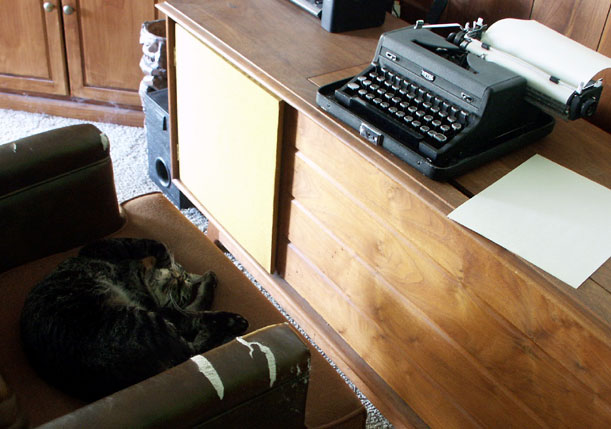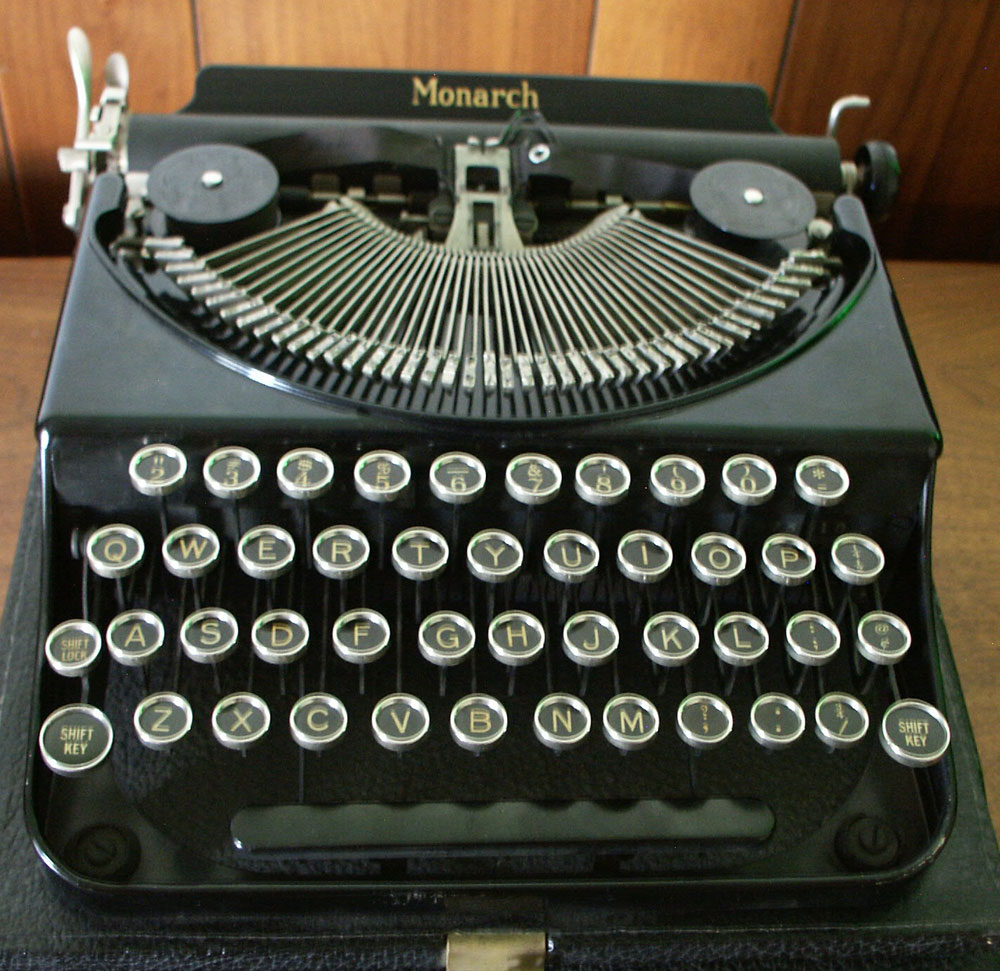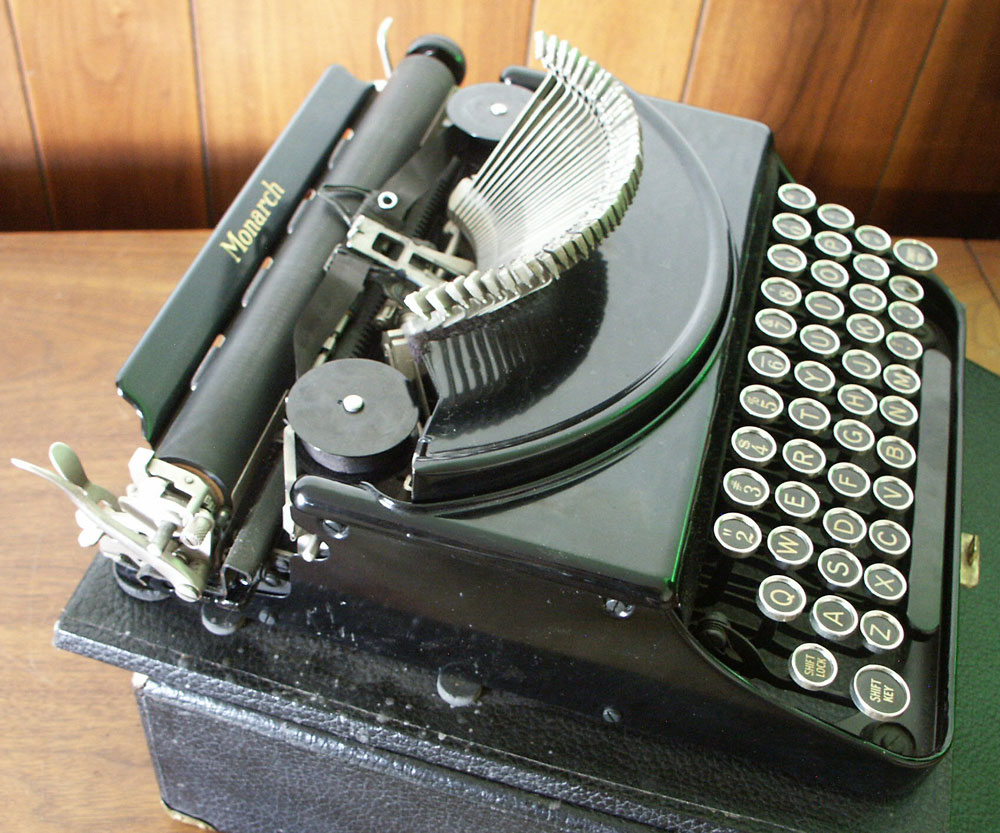|
|
Munk's
|
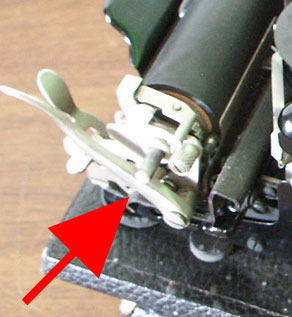 |
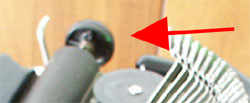 |
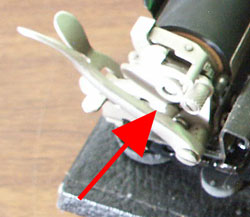 |
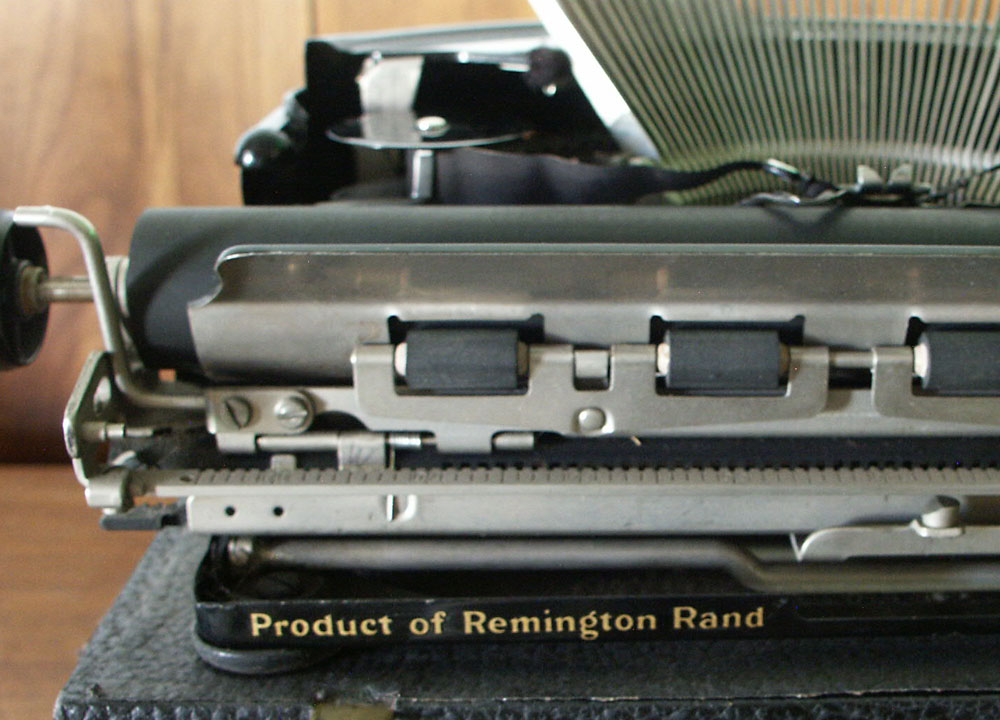
A sample of the typeface of my Remie Scout, a font face called Art Gothic, which was apparently exclusive to the Remie Scouts. The old girl needs a new ribbon, and the typehammers at the outside edges don't quite hit the paper flat enough to produce a good image. Ah well, who types fractions anyway?
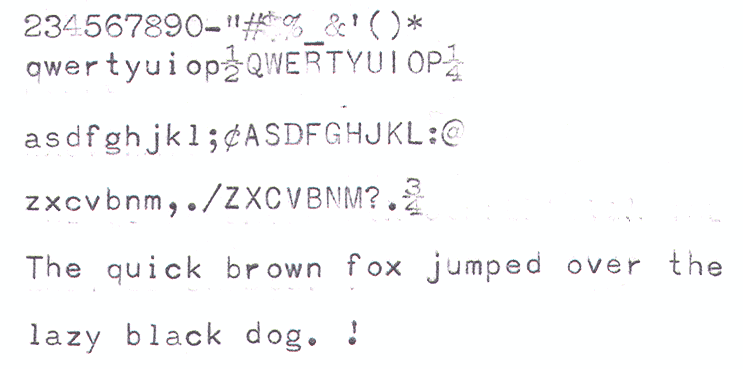
1947 Royal Quiet De Luxe
Serial #1551XXXThis was the one that started it all. Over a decade ago, I was crusing thrift stores looking for old Exotica records and ceramic ashtrays when I happened upon this gem in pristine condition, with a $4.95 price tag on it. I was utterly dumbfounded and picked it up, thinking "Hey, maybe I can sell it to someone for $10!" Of course, I never sold it. Once I rolled a fresh sheet of paper into it and started typing, I was hooked forever. The Royal Quiet De Luxe was reportedly a favorite of Hemingway, and Ian Fleming used a gold-plated Quiet De Luxe when he wrote Casino Royale that would do Aurus Goldfinger proud. It's easy to see why this one has been a writer's favorite for decades, with it's smooth action and considerable heft (for a portable), the Quiet De Luxe is basically a desktop typewriter in a portable package.
Typewriters of this vintage are especially coveted by certain jewelrymakers (known in typewriter circles as "keychoppers") who will find a beautiful machine like this one with it's wonderful glass-topped tombstone keys and cruelly cut off all of the keys with a hacksaw or bolt cutters, and then throw away everything else. If you ask me, that's a lot like finding an intelligent and beautiful girl and then tying her up, shaving her hair off for your wig project and throwing the rest in a wood chipper. Bastards.
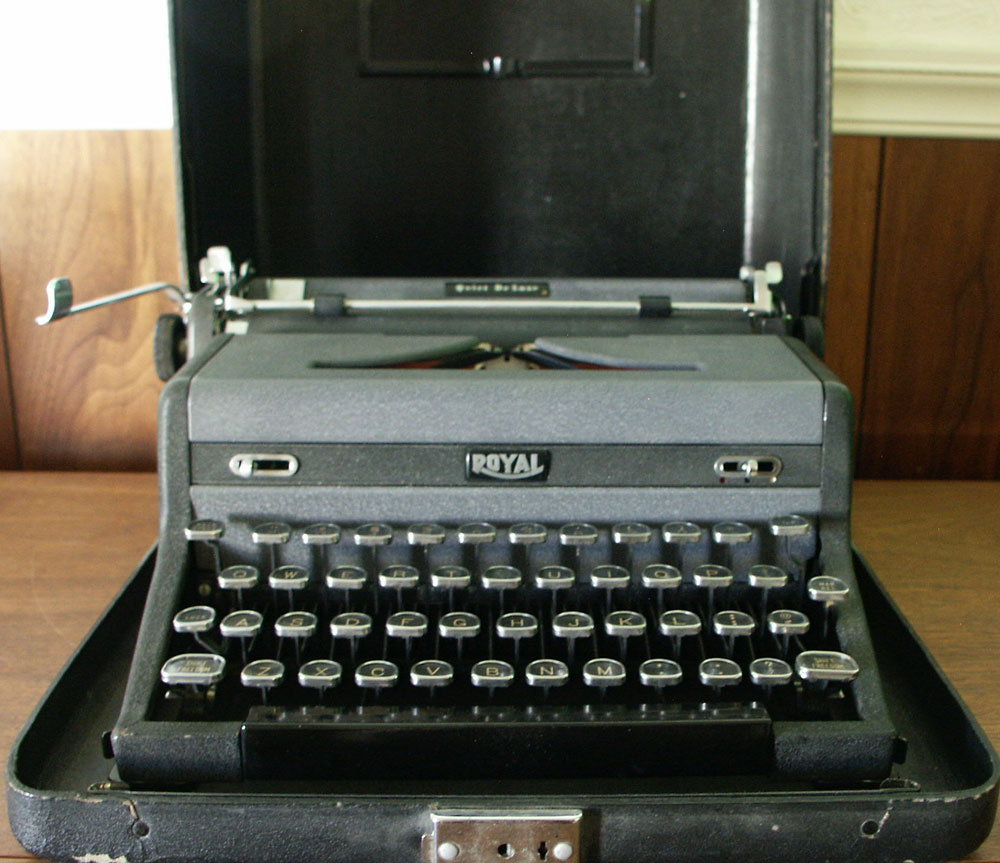

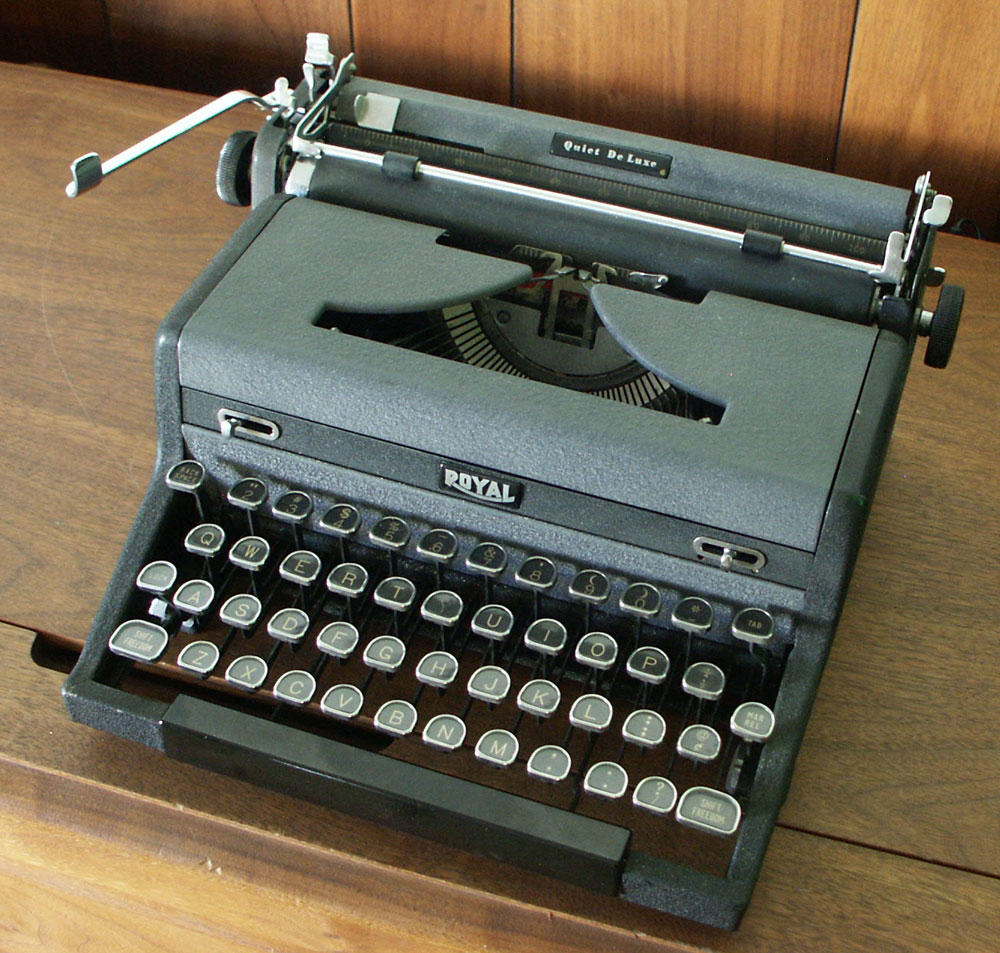
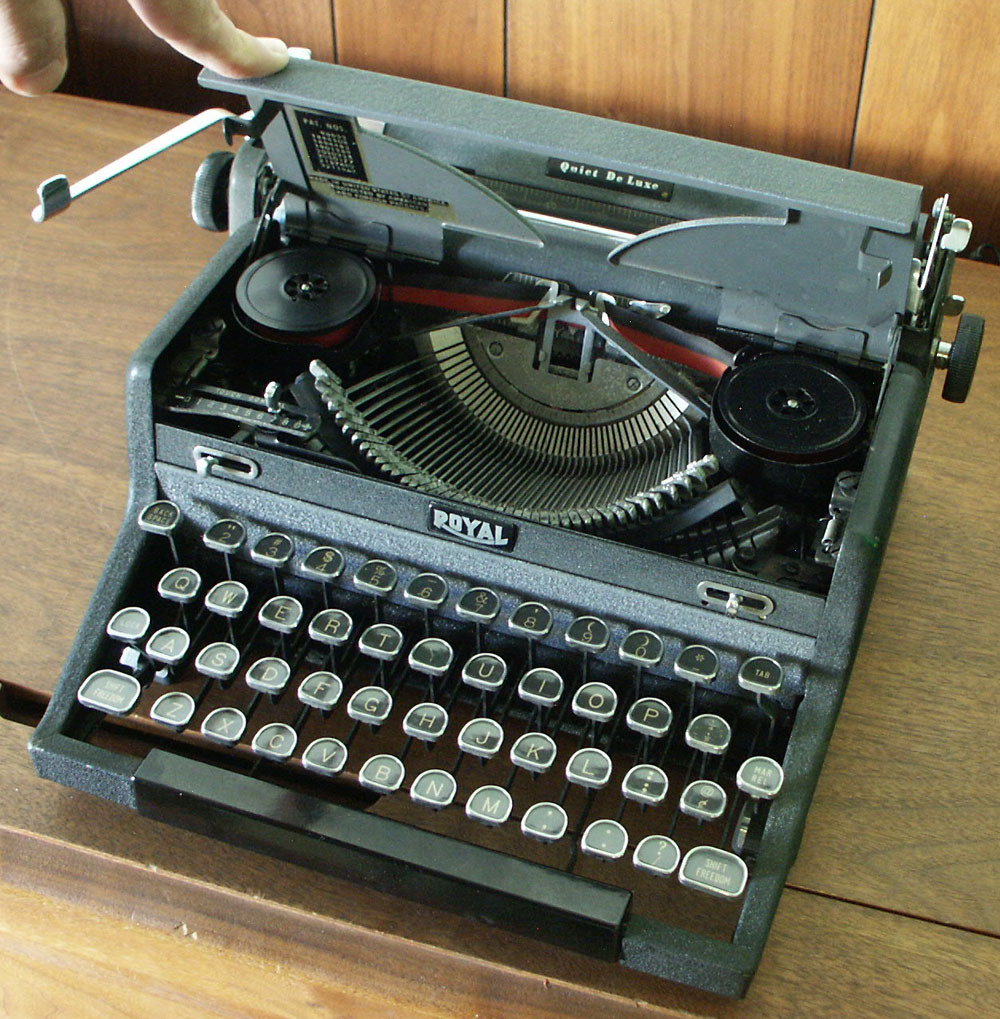
The case is made of some weird, molded fiberglass-like stuff that's sturdy as heck, but doesn't hold the finish paint well, so the outside is considerably scuffed. There are 4 push latches that release the typewriter feet from the case lid, and a lever to release the hinges so you can leave the typewriter on the bottom part of the case and just remove the top part.
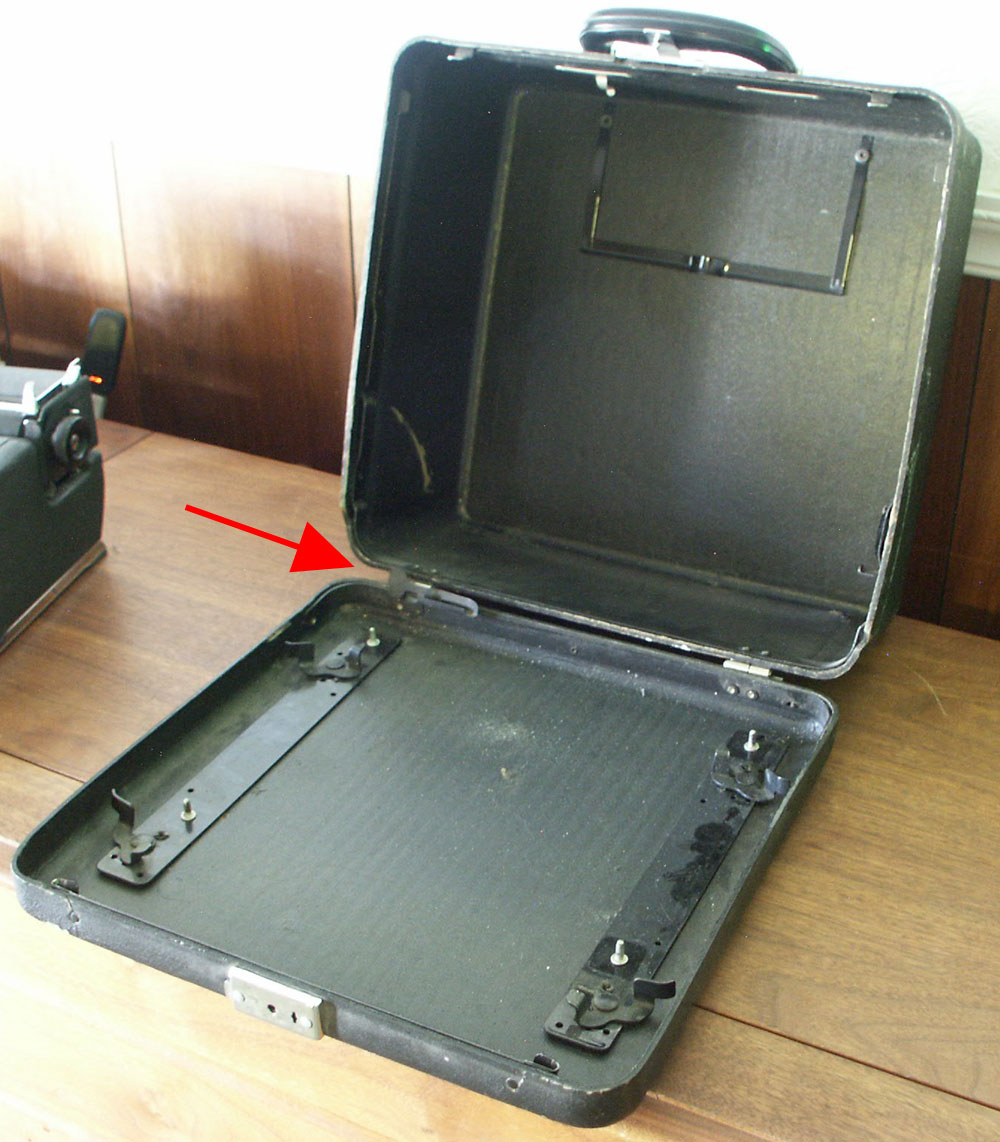
I really wish the guys at the thrift store hadn't used a red grease pencil to write the price on the outside, it's probably bonded with the paint and will be there forever.
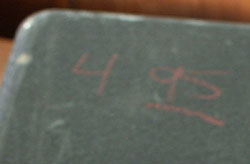
A sample of the typeface of my Royal Quiet De Luxe
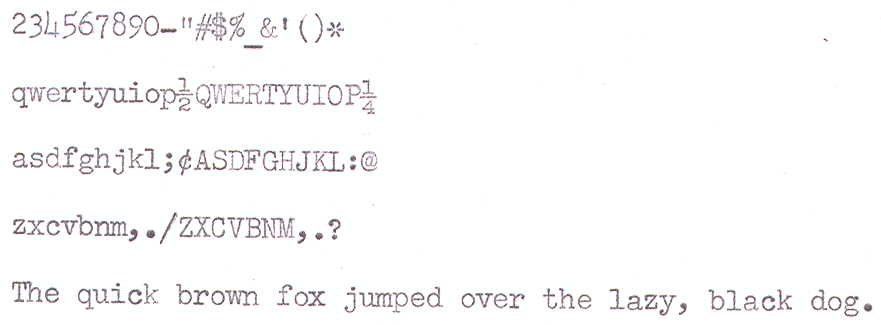
Update: The Royal, with its fading ribbon gave me an excuse to go visit the Last Typewriter Repair Shop In Town, the Mesa Typewriter Exchange, owned by Bill Wahl, who is the third generation of Wahls to run the little typewriter repair shop on 30 South MacDonald in downtown Mesa. He fixed me right up and reassured me that the platen on the 60 year old machine was in fine shape and didn't need to be replaced. We spent a little time talking about our favorite typers and I made plans to come back the following week with my Skyriter, and maybe take some pics of the great vintage signage. Bill's a pretty nice guy and knows a heck of a lot about fixing typewriters, so give him a try!
1955 Smith Corona Silent
Serial #5S529XXXI used to have 2 Smith Corona Silents, probably 1950's models, but I'm not sure because they're on loan to other writer friends of mine so I don't have the serial numbers handy. One of them is gone forever, as the buddy I loaned it to fell in love and simply refuses to give it back. It's no skin off my nose, though, as I'm not a huge Smith Corona fan. It's not that they aren't great typewriters (the older manuals have very smooth action and are actually a joy to type on), it's that when I grew up, my school was equipped with hundreds of 70's model Smith Corona electrics, so there's virtually zero romance factor between me and the Smith Corona brand. I see an SCM machine and I can hear the ugly hum in my head from those old electrics, and I really, really hate electric typewriters. The one electric typewriter I've ever bought was an IBM Selectric II ($10 with a bunch of cool type balls) when I was in an "emulate Hunter S. Thompson" phase, and I gave it away really soon after remembering that the hum and being tethered to a wall was really antithesis to what a typewriter is all about. Really, if you have to deal with hum and a power cord, you may as well use a computer.
UPDATE: Well I visited my buddy who has my Silent to snap some pics and cajole him into producing some pages, so now I have pics and a serial number that pins the manufacture date at 1955. Here it is in its tweedy case.
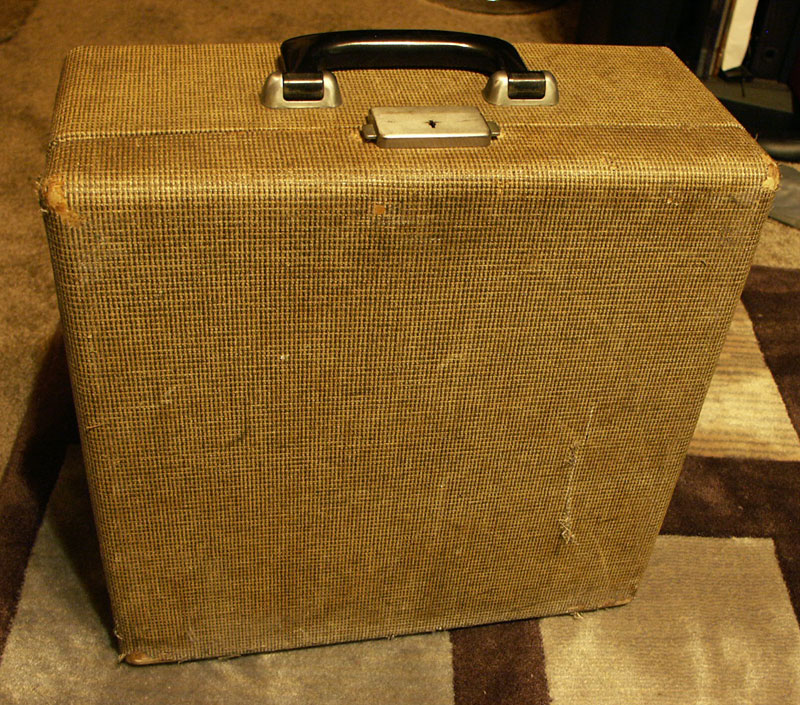
And here it is opened up. She's got a bit of grunge on her paint now from my buddy resting his hand on the spool cover, but that just indicates that he's been using it, which is the point of loaning out a typer. The crinkle paint on the silent seems to be a lighter shade than the crinkle paint on the Skyriter below, more like a shade of sand than the Skyriter's olive green.
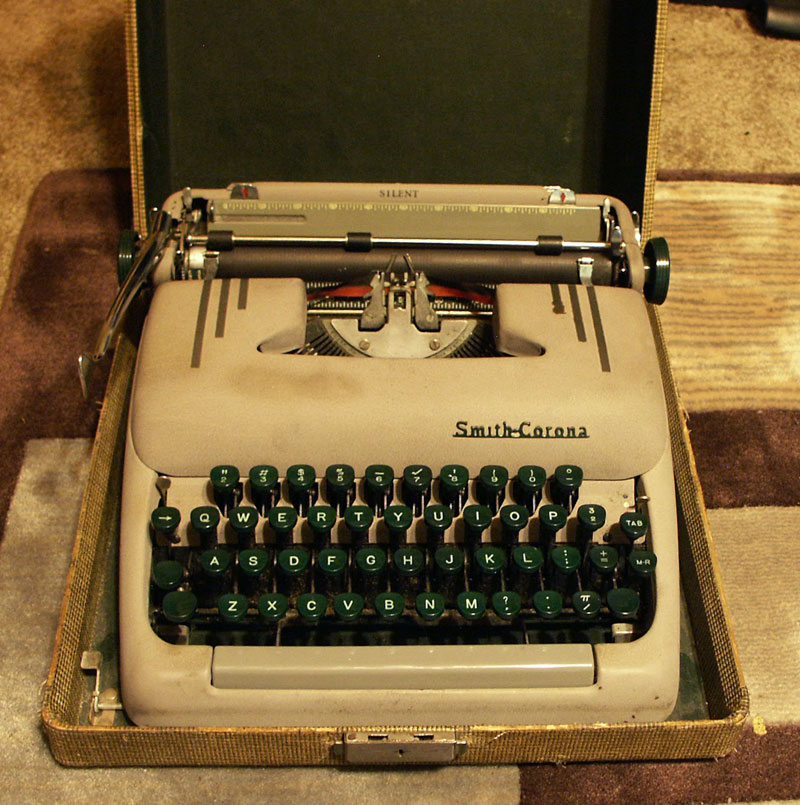
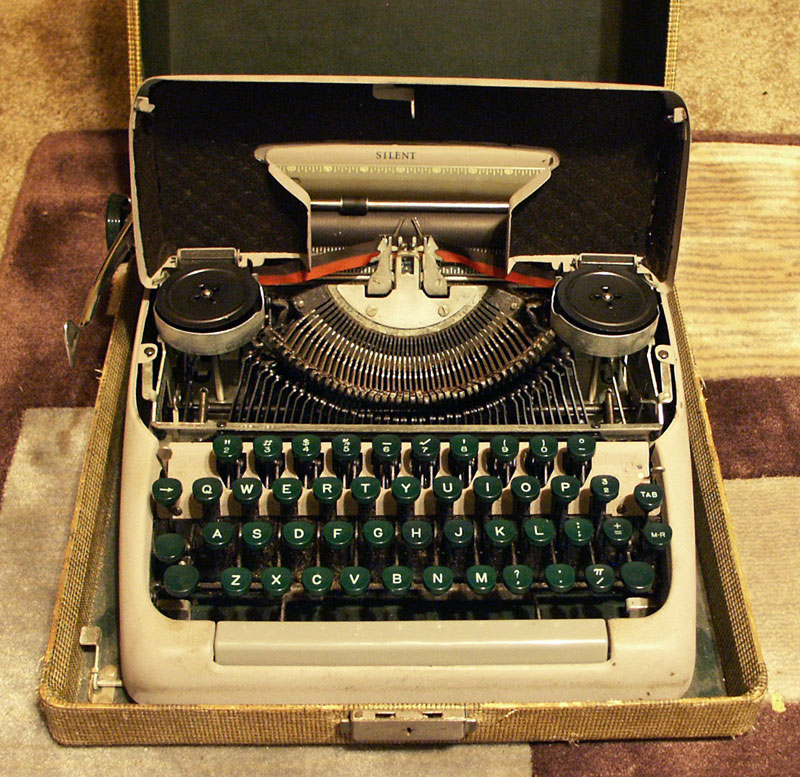
I've made a deal with my buddy over this typewriter: if he produces 100 pages of first draft for his novel, the machine is his to keep. Muhahahaha.. I love these kind of Faustian bargains - That particular machine cost me $10 at a thrift store sale, so that's a pretty good deal for a writer's soul.
1956 Smith Corona Skyriter
Serial #2Y339XXXSo, what do I do just a scant week after warning you all not to buy typewriters on Ebay? Yep, I went and bought a typewriter on Ebay. Not only that, it's a Smith Corona. In my defense, it's a mid-50's Skyriter, and I was the only bidder at $14.99 (+$11 shipping), plus I've lusted after one of the smaller super-compact typers for awhile. My preference was to find a 1964 Hermes Rocket to go with my Hermes 3000, but this Skyriter fits the bill, and it was hella cheap.
We'll find out on Tuesday whether this is going to be another one of those "My poor typer was smashed to bits because of poor packing/shipping" stories that you see on so many typecasting blogs. Knock on wood.
UPDATE: Although FedEx got a little confused and delivered it to the wrong street, either they or the unintended recipient eventually brought it and left it at my door in the night, no worse for wear. nothing broken or bent (that wasn't already bent anyway), and no major dings despite the fairly light packing job, so no Internet delivery horror story (:
My Skyriter needed only a light cleaning and oiling, a new ribbon, and I had to drill out the rivet holding one of the case latches so I could bend the latch back into shape and re-mount it. The latch was clearly bent out of shape in the Ebay photos, so it was something I knew I had to fix anyway, not a big deal. Now its smooth, fast action has earned it a spot in the permanent collection despite it being a Smith Corona. For a tiny machine, it feels very solid to type on compared to other super-compact typewriters I've tried out. Munky likes it!
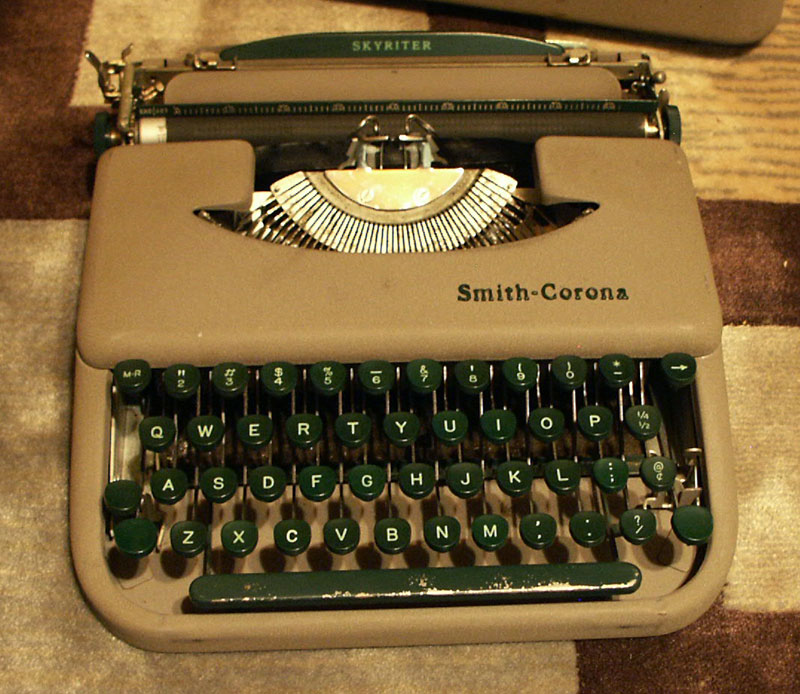

Like all Smith-Coronas I've owned (all around 1950's vintage anyway), This Skyriter has a particular odor to it. Click the link to discover my ponderings on The Scent of a Typewriter.
Below is a type sample from the 1956 Smith Corona Skyriter

1957 Tower Skyriter
Serial #3YT167XXXAnother Ebay purchase, this one I got because I wanted another Skyriter to play with that I wouldn't mind taking apart and to keep in the truck for mobile writing whenever I felt like it. A beater, in other words. I was the only bidder at 99 cents, and when it showed up I checked the postage on the box and discovered that the seller had really only made 32 cents on the deal after his shipping cost. Nevertheless, he had visited the link that I'd sent him detailing the proper way to package a typewriter for shipping and had followed it to a "T". That's an awesome seller, so I gave him 5 stars across the board.
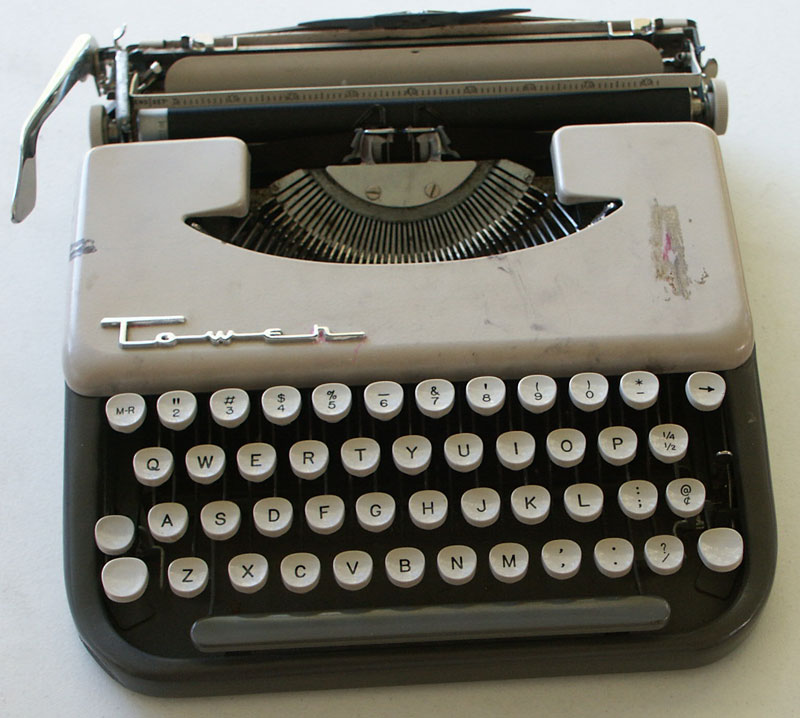
Yeah, this is what a Skyriter ought to look like. Smooth, attractive paint job and sweet 50's automobile-style chrome badge. A *full-sized* carriage return lever! This one's pretty roughed up, and is a candidate for sprucing up when I have the time. In the meantime, he'll serve as "go-anywhere Truck Typewriter". After a little bit of cleaning and oiling, he showed that he can be just as smooth and snappy as the other Skyriter, despite all the dings and dents he sports from his past rough handling.
Below is a type sample from the 1957 Tower Skyriter
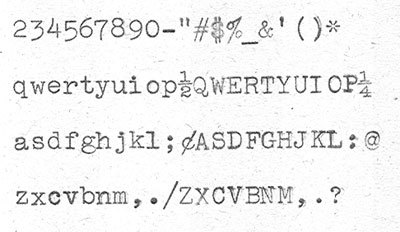
1964 Olivetti-Underwood Lettera 32
Serial #2287XXXOops, I did it again. I bought another typewriter on Ebay. A 60's-ish Lettera 32 for $9.99 + $25(!) shipping, I couldn't really pass it up, could I? Almost as good a deal as Cormac McCarthy got on his replacement Lettera 32! Braving the cross-country shipping system again, I'll let you know how it works out.
UPDATE: The Lettera 32 arrived in the undamaged box, well packed, but with numerous problems. The worst was that the carriage release levers were jammed flat against the carriage assembly and the carriage would not lock at all, it was stuck in release mode and would just zip back to the end of the line when you tried to position it. Ugh. The zipper on the side that wasn't photographed in the Ebay listing was a complete mess, zipper off-track and breaks and rips all over the right side, and the frame had a broken support. From the description, I kind of expected a machine in "REALLY GOOD SHAPE", so it would be an understatement to say that I was annoyed with the seller. Now that I knew what to look for, I checked the listing pics and saw that the release levers were smashed flat in them already, so this stuff was known to the seller and wasn't disclosed in the listing. I had to give the seller an earful about that, and it got kinda tense because she refused to admit that these problems were pre-shipping and kept trying to blame the post office. This is the kind of Ebay experience I was dreading.
Well, allright then. I expected the Tower to be a project machine, but I guess I now had another one on my hands. Time to take it all apart and figure out if I can fix it.
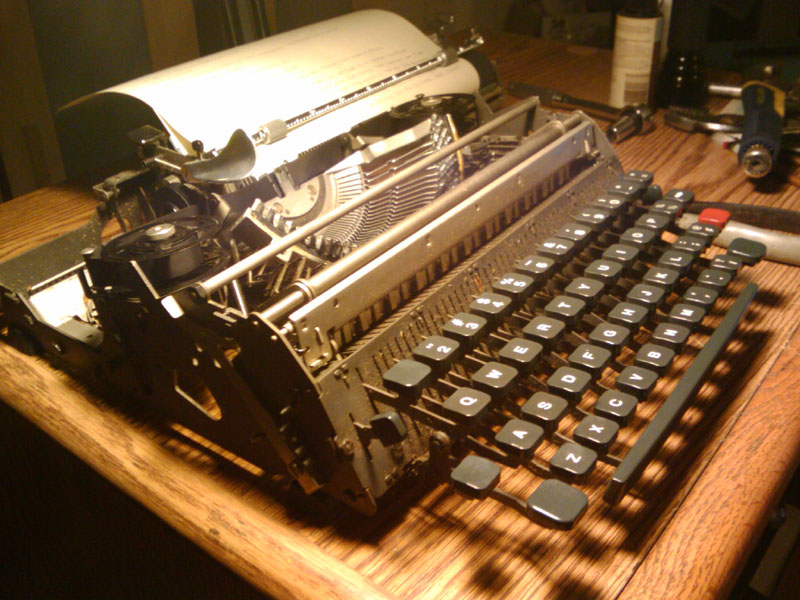
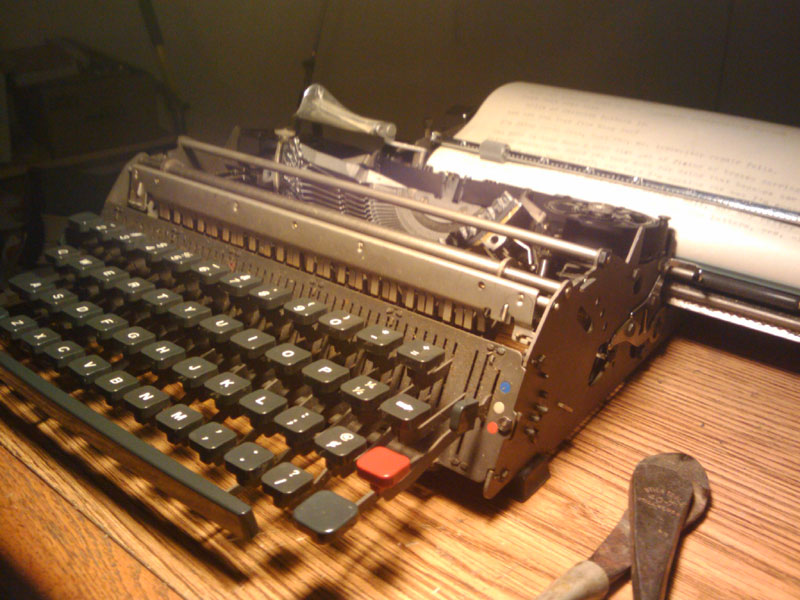
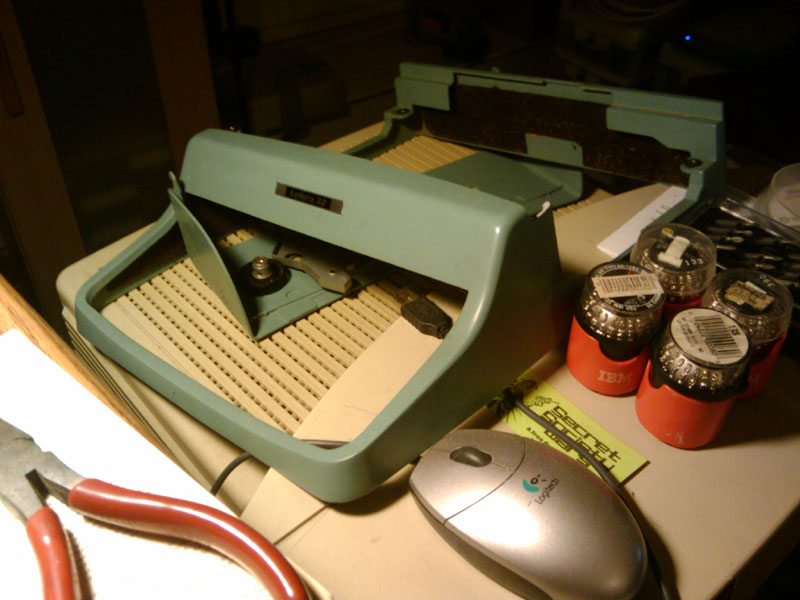
One thing in its favor, the Lettera 32 is very easy to take apart, except for one bit: the floorplate on the bottom of the machine is pinned to the rear of the frame. Not screws, which are easily removed, but pins. After about an hour of puzzling out if there were any other way to get inside the works, I gave up and just cut the pins out with a pair of wire nips. I learned later from Bill Wahl that you're supposed to lever them out with a screwdriver, but he admits that you end up bending the plate pretty badly when you do it that way, so the fact that I cut them out and replaced them with screws just means it'll be easier to get into next time.
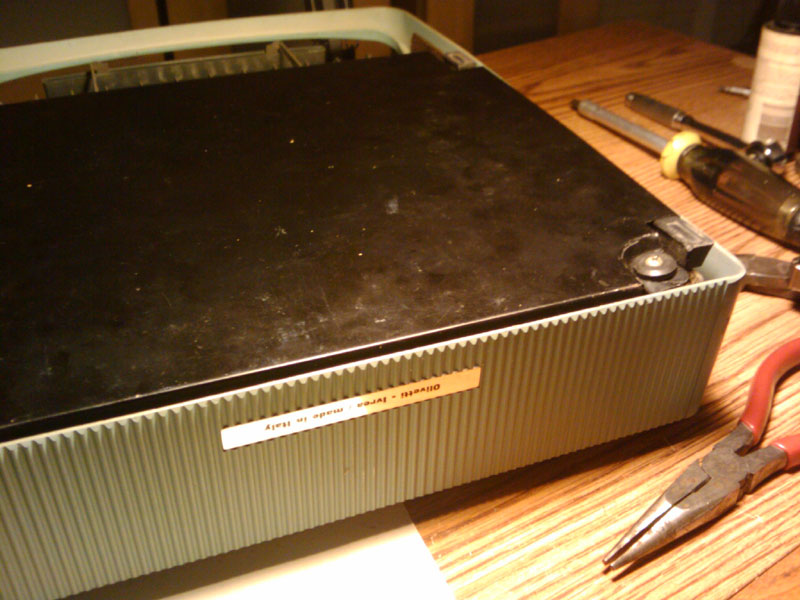
The problem with the carriage release was twofold, as it turns out. I figured out that the release levers had jammed over the little sub-levers they were supposed to *push* on and were instead *pulling* them. a little delicate levering with a thin screwdriver slipped everything back into place, but didn't fix the lack of carriage locking. Painstaking inspection of the works underneath the carriage revealed about a tablespoon worth of rubber eraser shavings half-melted to the entire works. Patient brushwork and a few toothpicks got the worst of it out, and when I tested it again, the carriage finally started locking up properly.
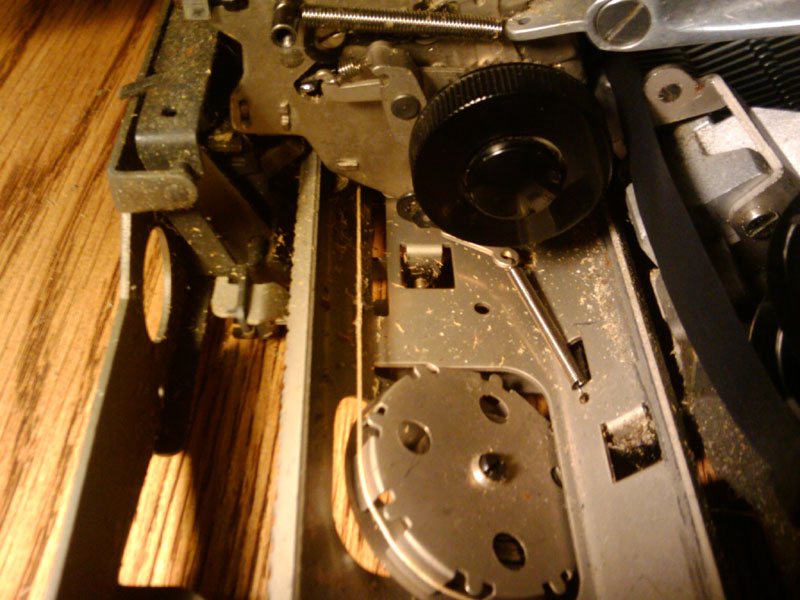
And then I managed to put it all back together again! (:
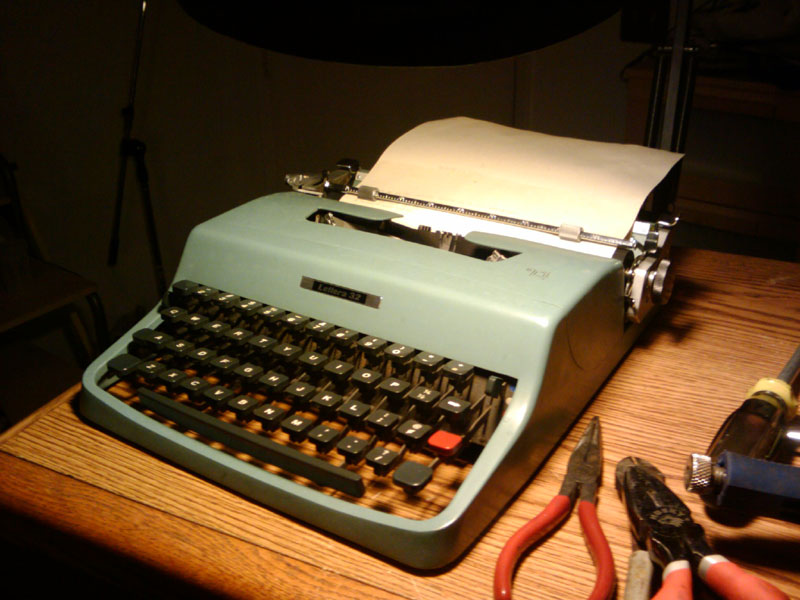
Now that it's in good working shape, I've done some typing on it and I find the keys too small for my fat fingers, especially the space bar, which is about the size of a toothpick. The action is way too light for me also, so this pretty typer will likely become my second loaner machine.
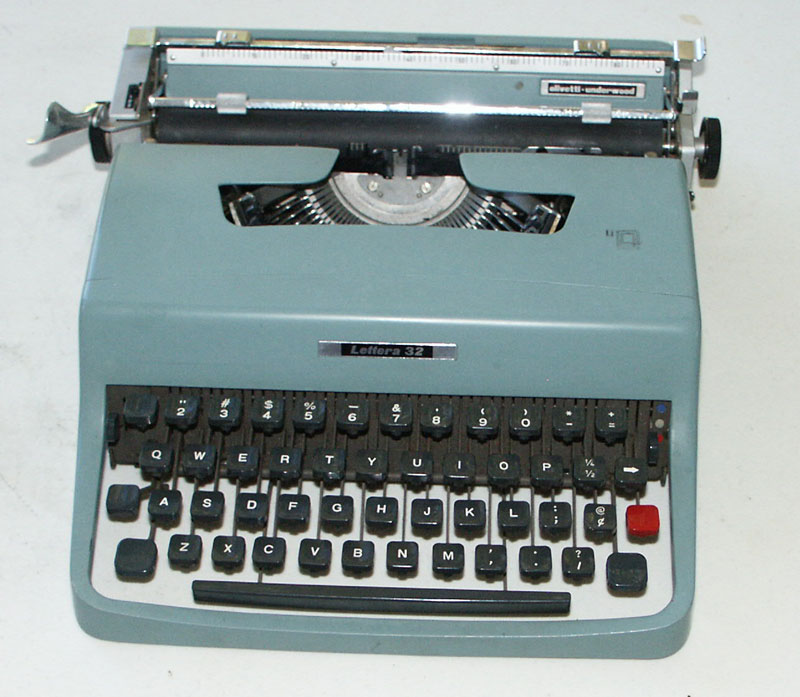

It's got a pretty case, too bad the zipper's practically useless.
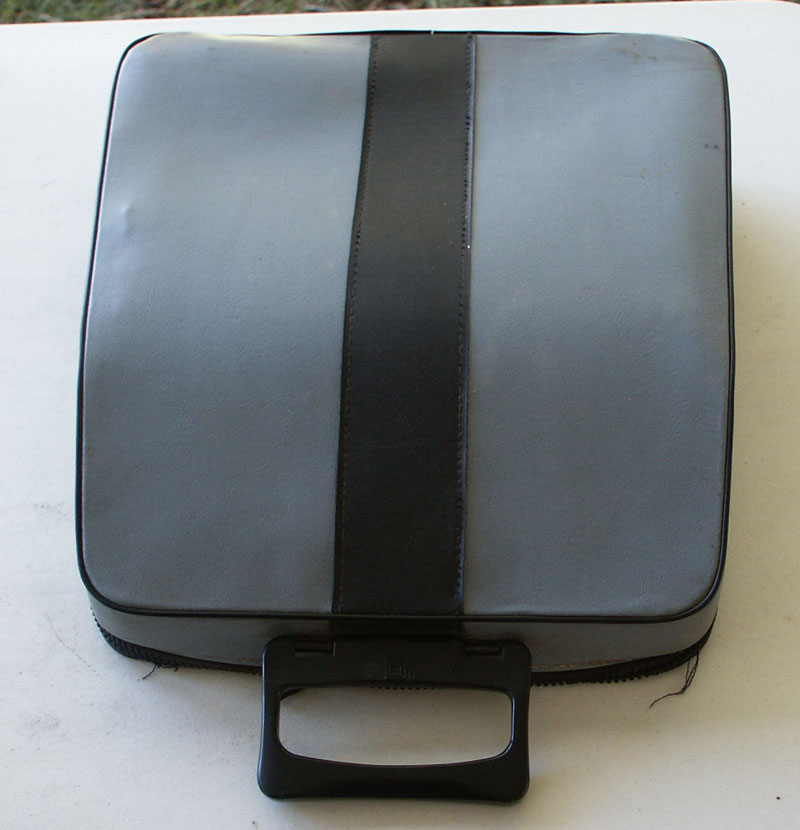
Below is a type sample from the 1964 Olivetti-Underwood Lettera 32
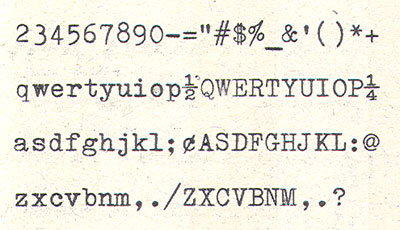
One of the reasons that pushed me into bidding on this machine is that it had not one, but TWO copies of its user manual included. It turns out that's it's more of an instruction *card*, but tells you what you need to know. Here, for your edification, is the Olivetti-Underwood Lettera 32 User's Manual!
I was having a bad day for a number of reasons, and I wrote about it on the Lettera 32 I had just fixed. you can read all about it as long as you don't object to bad words and senseless blood-splattery violence. Not for the kiddies, or those who don't understand the employment of extreme metaphor.
1964 Hermes 3000
Serial #3248XXXI had not bought a typewriter in 5 years when the bug bit me again. I was happy with my Royal and Remington, plus a couple of Smith Coronas to lend out to people who saw my typers and wanted to try out the typewriter thing. But I've seen Naked Lunch, and I know perfectly well what happens to typewriters that get lent out. I don't risk exposing my main writin' irons to that fate, but you can try out a Smith Corona! Anyway, both my Smith Coronas were out on loan and I started thinking about getting another loaner since I was pretty sure one of the Smiths was never coming back. I'd been out of the typewriter scene for quite awhile so I figured I'd read up a bit and see what was the latest news before going out shopping. This is where I learned about the Hermes 3000. Loads of blog posts about how everyone who has one loves it, how featurefull they are and how dreamy it is to type on one. Well, I do remember having seen a couple of them in thrift stores over the past decade, but I'd passed on them because they weren't in great shape and were invariably painted a weird green color halfway between mint green and battleship grey. I was holding out for black, but I have since found out that black isn't an option on these fine Swiss-made typers. Well, alright then. Green it is!
First stop was Ebay. Selection was wide and varied. Prices were all over the place, but usually absurd. Descriptions were nonexistent to outright lies. Careful analysis of photos showed many "perfect specimens" to have missing parts, flattened or shredded platens or major cosmetic defects. Ok, can't trust that den of theives, so where next? I did a day's run of thrift stores but Swiss typewriters, while not rare, are not common enough that your town's thrift stores are going to always have one in stock on a particular day. Strike 2, where next? Craigs List turned out to be the winner, listing exactly one pristine Hermes 3000 at a location less than 5 miles away that was priced within my "dinner at Outback" price range. I made the call, drove over and snatched it out from under the nose of another very interested buyer who had unfortunately expressed his interest via email instead of the phone. Ha! You snooze, you lose.
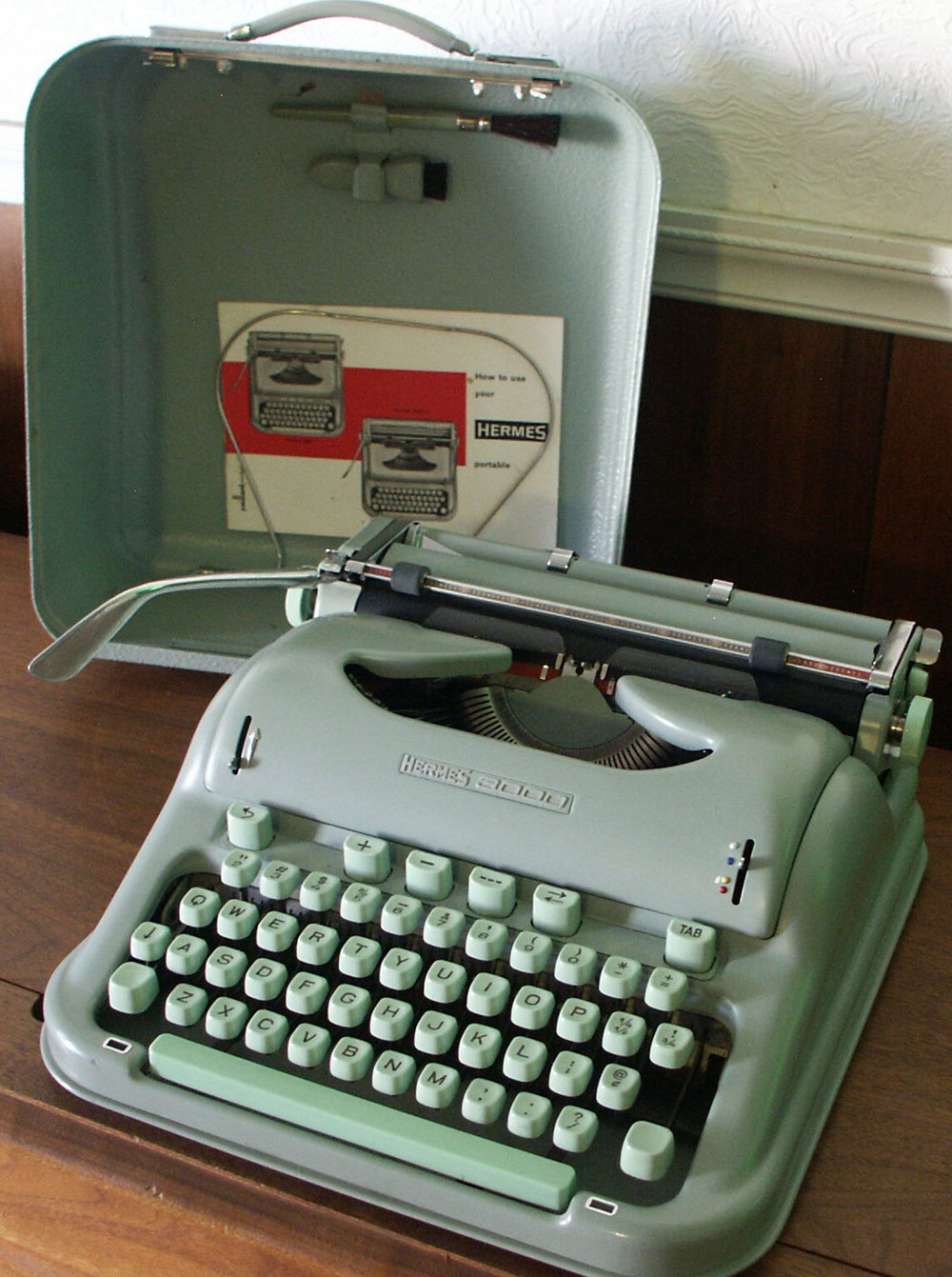
Ahh, Lord, the bloggers were on the money. The Hermes 3000 action is buttery smooth yet crisp, and the key travel seems quite a bit shorter than my older typers. My fingers love it dearly. The weird green color is even starting to grow on me, and provokes memories of my old 1950 Desoto, which had a curvy metal dashboard in almost exactly that shade of green. I loved that car, and now I love this typewriter.
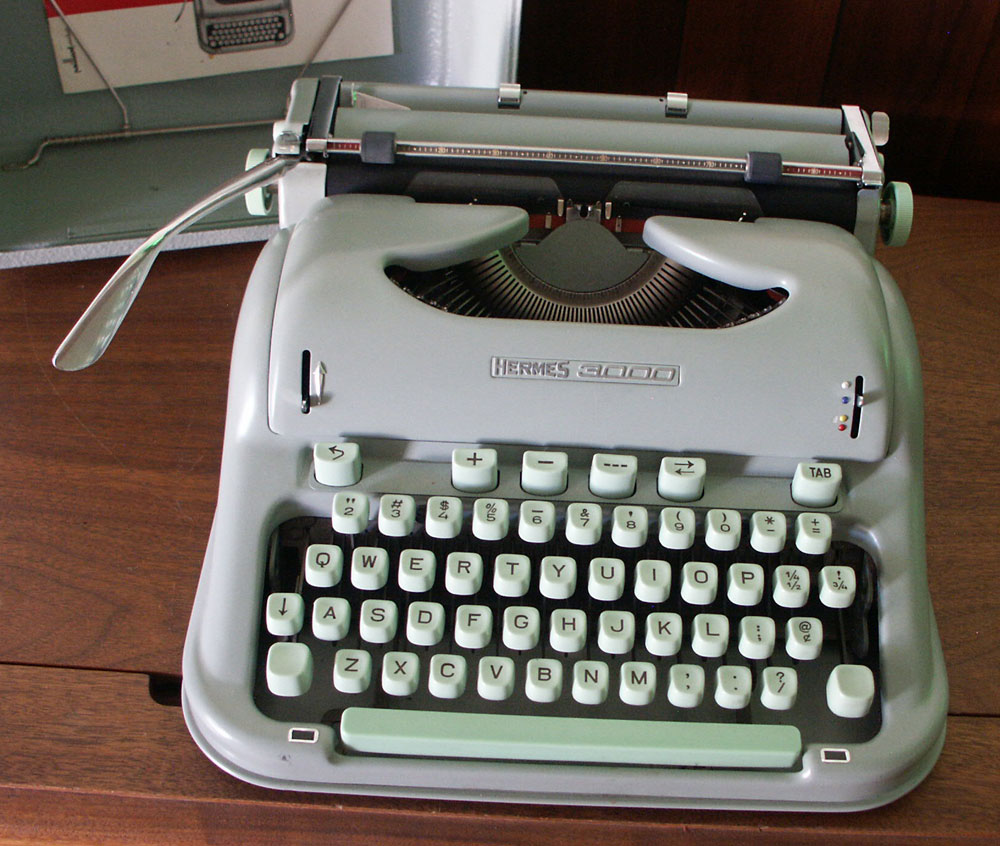
And no, you can't borrow it. The Hermes 3000 immediately got promoted from loaner to permanent collection and is now my favorite writin' iron. Go get your own.
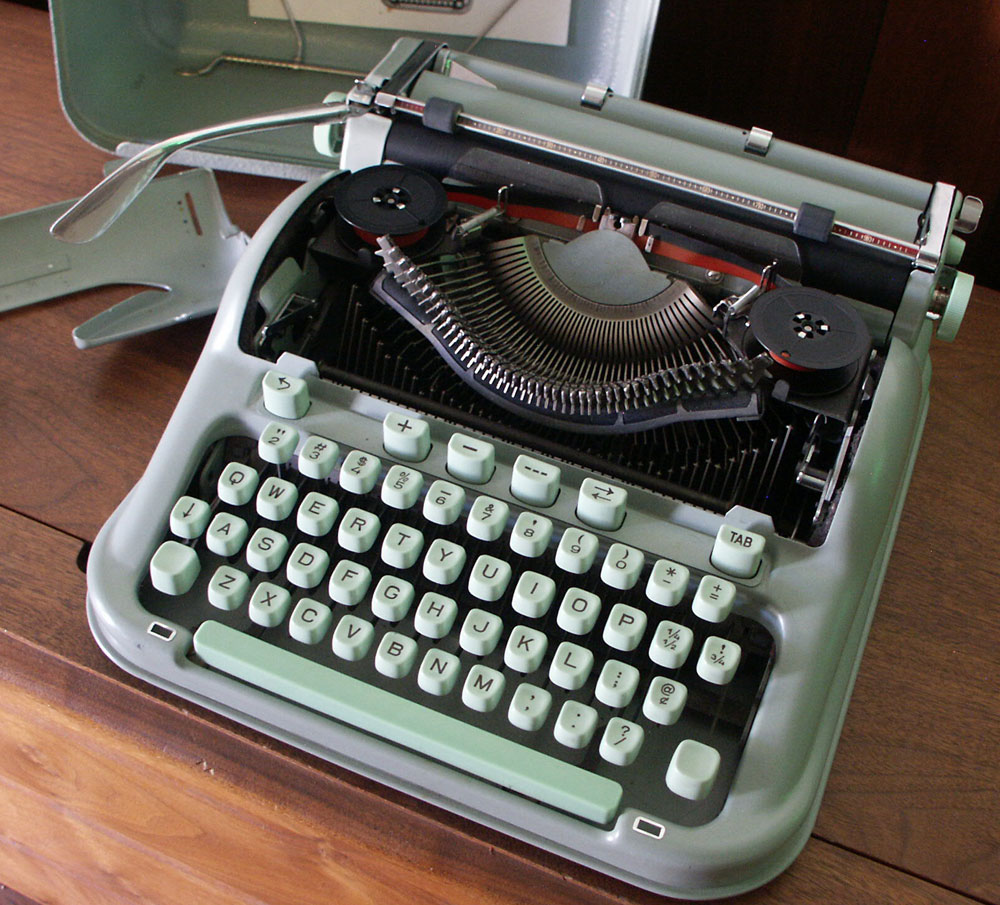
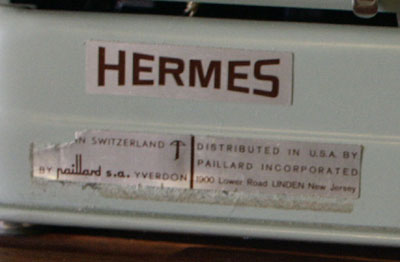
A sample of the typeface of my Hermes 3000

Since my Hermes 3000 came with all of the accessories including the user's manual, and since the purpose of some of the buttons and how to set the margins is somewhat inscrutable without documentation, I've taken the trouble of scanning my Hermes 3000 User's Manual for those who may have picked up one of these outstanding typewriters without documentation.
